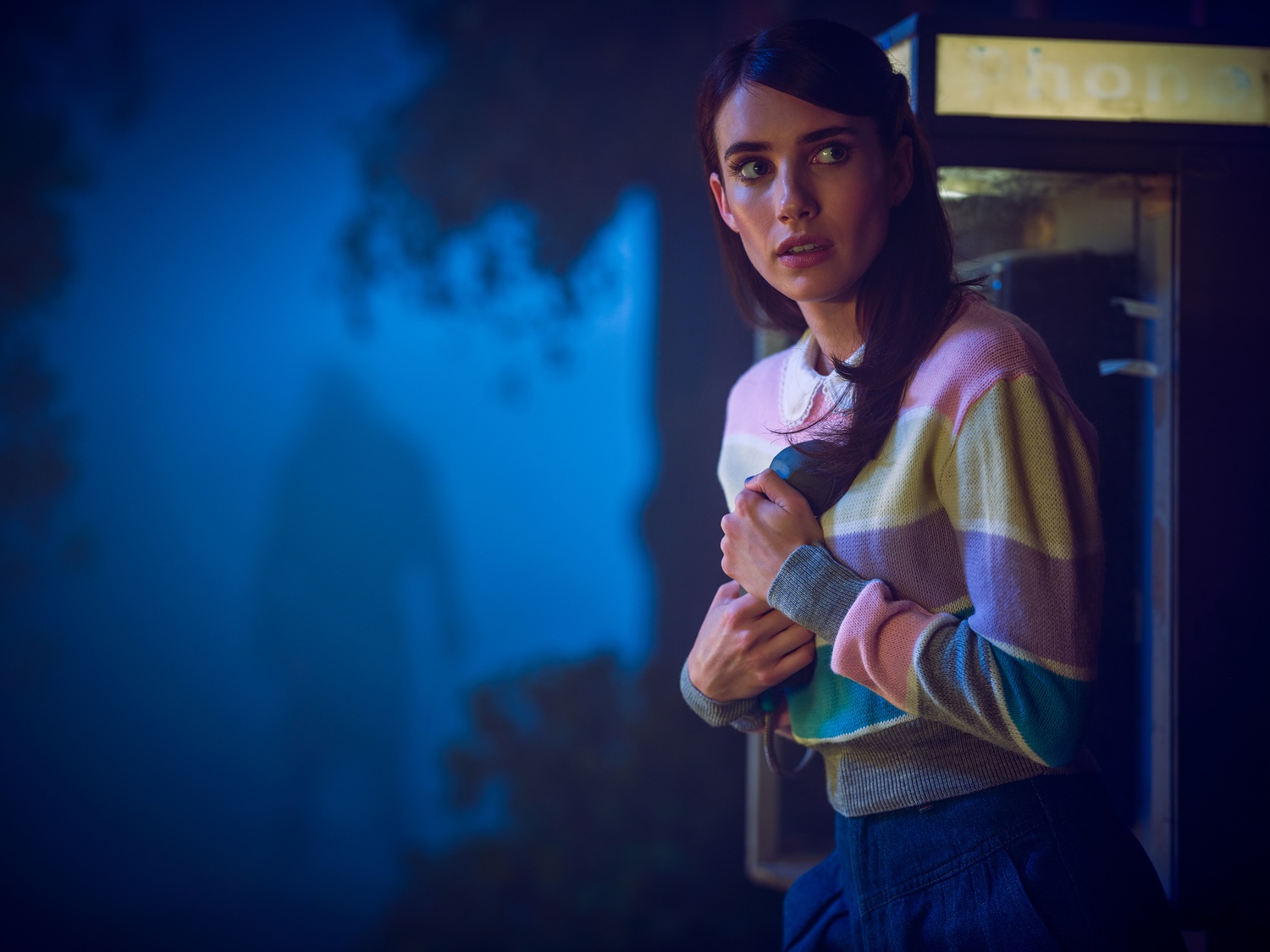
News
Harvard Alumni Email Forwarding Services to Remain Unchanged Despite Student Protest

News
Democracy Center to Close, Leaving Progressive Cambridge Groups Scrambling

News
Harvard Student Government Approves PSC Petition for Referendum on Israel Divestment

News
Cambridge City Manager Yi-An Huang ’05 Elected Co-Chair of Metropolitan Mayors Coalition

News
Cambridge Residents Slam Council Proposal to Delay Bike Lane Construction
‘American Horror Story: 1984’: Horrifyingly Campy

Has there been a gaping hole in your chest ever since you finished binging the latest season of “Stranger Things”? Good news: The newest season of the anthology series “American Horror Story” might just tide over your cravings for mildly spooky, retro summer vibes — as long as you don’t mind the lack of an engaging plot.
Set in the ‘80s, “AHS: 1984” follows a ragtag group of friends comprised of innocent good-girl Brooke Thompson (Emma Roberts), sultry sex icon Montana Duke (Billie Lourd), peppy aerobics instructor Xavier Plympton (Cody Fern), eye-candy jock Chet Clancy (Gus Kenworthy), and fun-loving Ray Powell (DeRon Horton), who is also the sole man of color in an overwhelmingly white cast. In the season premiere, “Camp Redwood,” the clique of walking stereotypes takes a road trip to a secluded summer retreat called Camp Redwood where they’ve all secured jobs as camp counselors. Soon, however, the friends suspect that the local psycho known as Mr. Jingles (John Carroll Lynch) who killed an entire cabin of campers at Redwood 14 years ago might be on the loose again after escaping from a mental institution, and this time, he’s hunting them. Stuffed with so many references to classic horror movies that it strangles any potential for originality, “AHS: 1984” is a desperate attempt to ride the coattails of “Halloween” and “Friday the 13th” back to relevance under a poor guise of paying homage.
The clever cinematography of the opening scene of “Camp Redwood” admittedly sets a promisingly creepy tone, even if the rest of the episode struggles to live up to it. In the scene, three teens are sprawled in the same bunk, trying to have sex without being caught by their counselors. Although one of the girls repeatedly asserts that she hears a strange noise nearby, she eventually brushes off her fears and begins pulling her shirt over her head — in this moment, the perspective suddenly switches from an impersonal third-person angle into the point of view of this potential victim, effectively increasing audience investment despite the cheesy premise. The movement of the shirt across the audience’s field of vision serves as a brilliantly suspenseful transition sequence leading to the reveal of Mr. Jingles. Unfortunately, the majority of cinematic techniques employed after the opening scene are much less creative: Director Bradley Buecker resorts to typical horror tactics like focusing the camera on the dark background rather than the characters at the forefront to signal a sinister presence, or taking brief, close shots that capture sudden movements.
The generally uninventive cinematography is only one symptom of a broader problem — “American Horror Story” has taken a turn towards overdramatic slasher comedy, and it’s no longer concerned with being genuinely scary. Gratuitous gore fills an inordinate amount of screen time in “Camp Redwood,” from slow pans over bloody, dead bodies scattering the floor of a cabin to close-ups of Mr. Jingles’ hands as he cuts off his victims’ ears and strings them onto a keychain. The abundance of gore used to show off the killer’s modus operandi comes off as such an obvious effort to make Mr. Jingles intimidating that he unwittingly becomes a caricature instead. Villains of successful horror productions thrive off of ominous ambiguity as to why they’re a threat, because the unknown is more unsettling than any one specific characteristic. One of the biggest failings of “AHS: 1984” is that it gives too much away about its antagonist from the get-go, and no amount of good acting or post-production edits can salvage the tension (or lack thereof) that is so crucial to the horror genre.
“American Horror Story” seems to be self-aware of its failings and tries to rejuvenate the plot to no avail by including an assortment of distractions like ’80s paraphernalia and even a bland secondary villain. For one thing, “AHS: 1984” doesn’t smoothly integrate ’80s nostalgia into its plot as much as it shoves flamboyant, retro stereotypes into the audience’s faces. The aerobics class scene and slang like “rad” can be excused, but the show crosses the line into trying too hard with its use of neon pink font to indicate changes in setting and to flash each character’s name when they first appear, as if “American Horror Story” were a boy-band music video rather than a TV series. For another thing, introducing the real-life criminal known as the Night Stalker as a second antagonist alongside the fictional Mr. Jingles in the same episode seems like a last-ditch effort to up the stakes, because the more the scarier, right? In fact, the Night Stalker’s presence thins out the audience’s attention across these two competing plotlines and undermines the importance of Mr. Jingles, a character that’s already fairly unimposing.
The bottom line? “American Horror Story: 1984” doesn’t have the finesse to pay tribute to staples of the horror genre without losing its own identity. In an attempt to dress up the uninspired content of the season premiere, director Bradley Buecker relies on dozens of cheap tricks — gore, jump-scares, nostalgia, the remnants of positive opinion of “American Horror Story” left over from earlier seasons — much like a chef who overturns the seasoning canisters into a dish to hide how undercooked it is. Go ahead and give “AHS: 1984” a try if you’re into goofy horror and happen to have some free time on your hands, but certainly don’t carve time out of your schedule every week just to tune in.
—Staff writer Miranda Eng can be reached at miranda.eng@thecrimson.com
Want to keep up with breaking news? Subscribe to our email newsletter.
